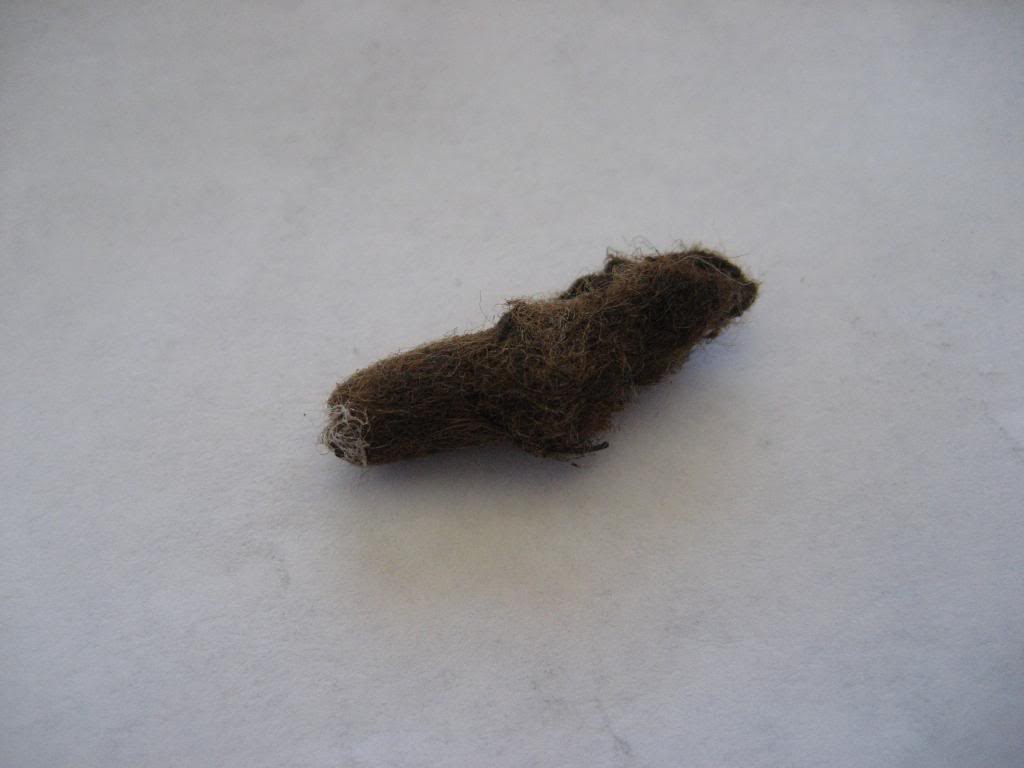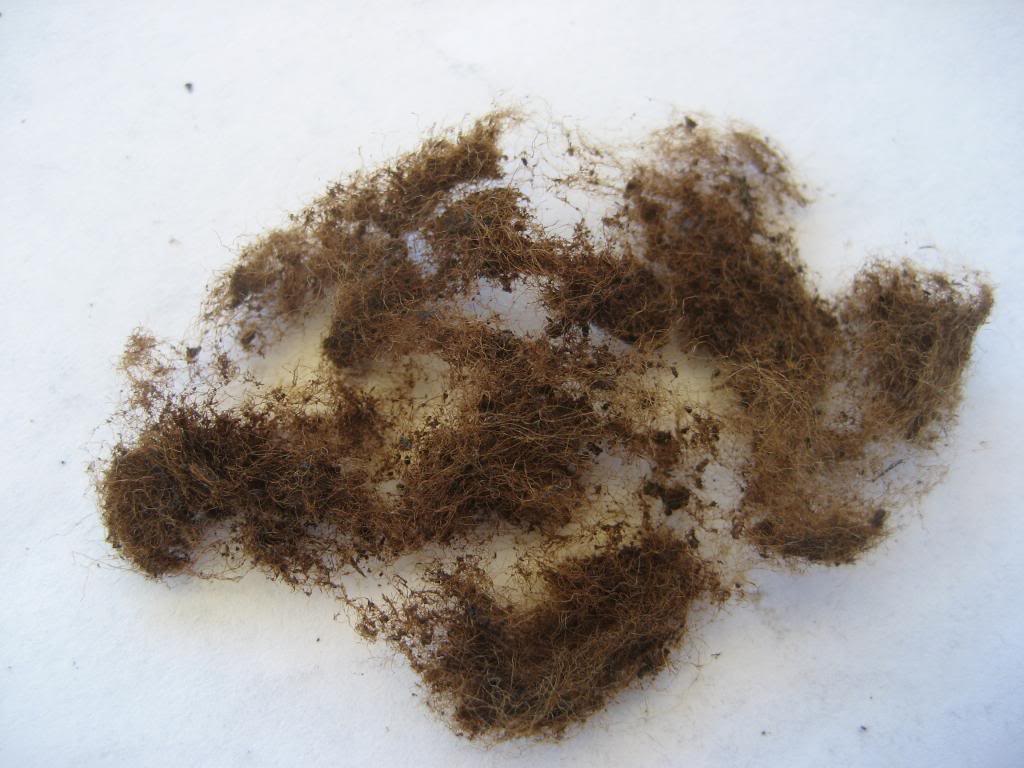markpierce
Master and Commander
- Joined
- Sep 25, 2010
- Messages
- 12,557
- Location
- USA
- Vessel Name
- Carquinez Coot
- Vessel Make
- penultimate Seahorse Marine Coot hull #6
Yesterday, the boatyard mechanic couldn't get the Coot's engine to run after having serviced the engine (including valve adjustment and on-engine fuel filters.) Neither could I after showing up to answer the mechanic's call for help. Fuel wasn't getting to the engine and there was a lot of air in the fuel line. Normally use the fuel polisher pump to prime the engine. Had everyone puzzled until a fibrous blockage was found in the fuel line prior to the filters. Am looking forward to examining the fibrous mass.
Examined the "mass." The first photo is how it came, the second after being pulled apart. The material was something like felt. It was found in the inlet to the fuel-polishing filter.


Comments welcome.



 I recently had a similar "ghost" when trying to find the loss of high speed power on a new goKart I have for the grandkids. First thought it was dirty carb. Tore it down and cleaned twice, double checked float height....nothing. Then noticed I was getting some blowback through the carb when I would increase revs. I adjusted the valves thinking something was leaking by there, but they were within tolerance. Was about to pull the head and check for bent/burned valves, when I thought I'd check the muffler for obstruction.....BINGO! A wad of fiberglass insulation had collected on the spark arrester screen (about 2" up inside the 3/4" tailpipe....knocked the treehugger screen out and everything was fine. Had more power than ever so I guess it was in there from manufacture, and slowly collected carbon on the fiberglass untill it affected power.... In 40 years of nuclear power technical troubleshooting work, it is usually the most simple things that are the hardest to find!
I recently had a similar "ghost" when trying to find the loss of high speed power on a new goKart I have for the grandkids. First thought it was dirty carb. Tore it down and cleaned twice, double checked float height....nothing. Then noticed I was getting some blowback through the carb when I would increase revs. I adjusted the valves thinking something was leaking by there, but they were within tolerance. Was about to pull the head and check for bent/burned valves, when I thought I'd check the muffler for obstruction.....BINGO! A wad of fiberglass insulation had collected on the spark arrester screen (about 2" up inside the 3/4" tailpipe....knocked the treehugger screen out and everything was fine. Had more power than ever so I guess it was in there from manufacture, and slowly collected carbon on the fiberglass untill it affected power.... In 40 years of nuclear power technical troubleshooting work, it is usually the most simple things that are the hardest to find! 
 So what do you think the material is and where did it come from?
So what do you think the material is and where did it come from? 